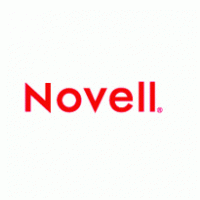In the mid-1980s to mid-1990s, Novell dominated the network operating system sector with its NetWare product. But since that leadership was upturned by Microsoft’s release of Windows NT, the company seems to have struggled to assert a strong identity, selling a mixture of open source and proprietary systems in a broad range of technology areas.
Even CEO Ron Hovsepian admits that there has been “confusion about the role and the identity of the company in the industry”.
That confusion has coincided with a steady decline in sales. The company’s revenues have fallen for six consecutive financial quarters, the latest of which Novell reported in May 2010. “We were down on revenue last year with the rest of the industry, but we’ve been delivering good profitability,” says Hovsepian. “Now the shift we need is to get more revenue growth on the product side.”
One prong of Hovsepian’s turnaround strategy has been to adopt a phrase that, Novell hopes, communicates a common thread to its various systems management, security and infrastructure offerings – intelligent workload management.
This is, according to Novell’s collateral, “a new and more effective model of computing that enables IT organisations to manage and optimise computing resources in a policy-driven, secure and compliant manner across physical, virtual and cloud environments.”
Hovsepian says the term has meaning to Novell’s audience. “I think we’ve done a good job of putting a stake in the ground saying what we’re going to be,” he says. “Now we just have to be boringly consistent on staying with it in order to build that brand.”
Meanwhile, Novell’s other approach to recapturing growth is one that rather circumnavigates the brand identity issue. The company is partnering with telecommunication providers Verizon in the US and Vodacom in Africa to add security and identity management functionality to their software-as-a- service offerings. Hovsepian says that through such partnerships Novell is positioning itself as a “cloud enabler”, supplying the tools for businesses to enter the cloud “in a secure and compliant manner”.
But even this strategy seems to be driving greater diversity. In early 2010, the company announced the forthcoming availability of Novell Pulse, a real-time communication and collaboration tool that takes its cue from Google’s Wave product.
Hovsepian dismisses the suggestion that the social media-inspired solution might prove to be a white elephant, explaining that Pulse forms an important part of the company’s service provider strategy.
“It is a real-time collaboration platform for the enterprise – it really differentiates us, because it’s the thing that we know our competition doesn’t have,” he says. “So it gives us a tool to have a conversation with this service provider that’s part of their value proposition – it really lets them differentiate their offering as a service provider.”
Hovsepian predicts that it will take somewhere between 18 months and two years for the strategy of reselling products through its ecosystem of SaaS partners to reach its peak market penetration. Novell’s investors – seeing much of the industry bounce back already – might not be best pleased by this slow pace, but there are indications that this might not be a problem.
Earlier this year, Novell was the subject of a $2 billion acquisition attempt from hedge fund Elliott Associates, which already owns a stake in the company. Novell declined the bid. “Our board came out back in March and gave a clear answer,” Hovsepian asserts. “[Elliott Associates] made an unsolicited, conditional proposal for the company. ‘Unsolicited’ is the first operative word there, ‘conditional’ is the second. Our board reviewed that proposal and found it to be inadequate.”
While the answer given by Novell’s board was a clear refusal, it also stated that it would be prepared to consider alternative offers. According to an May 2010 report in the The Wall Street Journal, about 20 suitors – mostly private equity firms – had approached the company with offers. At the time of publication of this article, no offer had been accepted.
Private ownership may allow Novell to take the drastic action required to turn its business around, should the intelligent workload management and “cloud enabler” strategies prove insufficient. There is, for example, an opportunity for a company with deep pockets to become a commercial open source consolidator. It would be ironic if the opacity of private ownership were to allow Novell to pull this off.
In the meantime, Hovsepian is focused on making Novell a company with an identity, and the ability to live up to it. “If we have built an ecosystem and a model that was institutionalised, so that the brand has a clear identity and the employees have their clear identity,” he says, “that would be a great legacy.”










